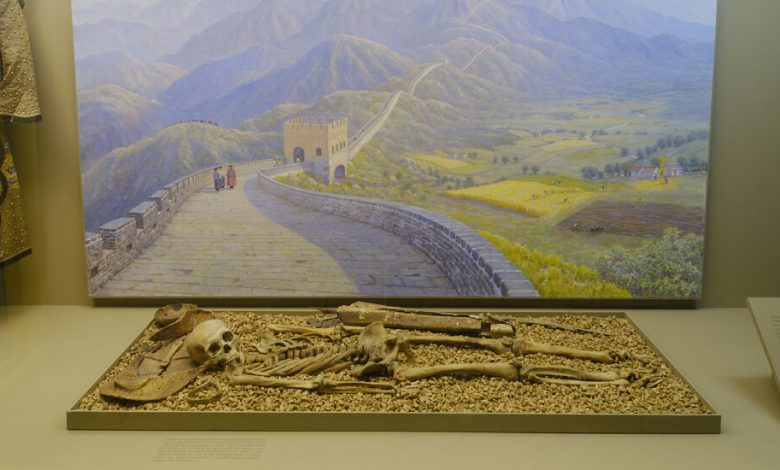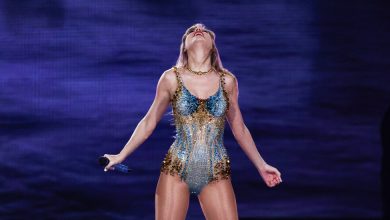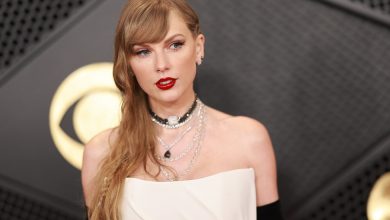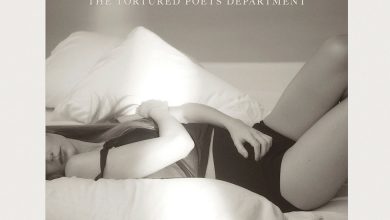Facing Scrutiny, a Museum That Holds 12,000 Human Remains Changes Course

The American Museum of Natural History is planning to overhaul its stewardship of some 12,000 human remains, the painful legacy of collecting practices that saw the museum acquire the skeletons of Indigenous and enslaved people taken from their graves and the bodies of New Yorkers who died as recently as the 1940s.
The new policy will include the removal of all human bones now on public display and improvements to the storage facilities where the remains are now kept. Anthropologists will also spend more time studying the collection to determine the origins and identities of remains, as the museum faces questions about the legality and the ethics of its acquisitions.
“Figuring out the answers to exactly what we have here, and how to actually describe that as completely as we can, is something that is important to do moving forward,” said Sean M. Decatur, who became the museum’s president in April.
The effort, which was announced to staff members this week, comes as natural history museums face increasing scrutiny over remains they often acquired in the name of discredited scientific theories, like eugenics, and which typically involved collecting the bodies of people who never consented to becoming institutional property.
“Human remains collections were made possible by extreme imbalances of power,” Decatur told the staff in a letter. “Moreover, many researchers in the 19th and 20th centuries then used such collections to advance deeply flawed scientific agendas rooted in white supremacy — namely the identification of physical differences that could reinforce models of racial hierarchy.”
In the New York museum’s collection are the remains of 2,200 Native Americans that are supposed to be repatriated to descendants under a federal law adopted more than 30 years ago. The museum has repatriated the remains of 1,000 people in response to that law, but has drawn criticism for the pace at which it has been researching the tribal affiliation of others. Currently, the museum has three people involved in that work, although Decatur said part of his initiative is to focus more resources in this area.
A second set of problematic remains includes the bones of five Black adults that were dug up from a Manhattan cemetery for enslaved people in 1903.
A third set, known as the “medical collection,” includes the remains of some 400 largely poor New Yorkers who died in the 1940s and whose unclaimed bodies were initially given to medical schools. They were transferred to the museum by the schools in a process that may not have been allowed under the law, according to legal scholars.
Decatur discussed the desecration of the cemetery for enslaved people in his letter to the staff. The cemetery most likely dated back to colonial times and was excavated during construction in the Upper Manhattan neighborhood of Inwood. A photo from that time displays the skeletons that had been pulled from the ground. Workers formed a pyramid with the skulls.
The issue of those remains recently resurfaced when local historians began to research the area surrounding the former cemetery because it is now the subject of further development. They looked into the history of the people buried there and tracked the disposition of their remains in records held by the museum. “I felt like the bones should be repatriated,” said Cole Thompson, one of the historians.
In an interview, Decatur said he found the treatment of the bodies disturbing.
“Certainly as an African American, the question of race is one of particular interest,” Decatur said. “The legacy of dehumanizing Black bodies through enslavement continues after death in how those bodies were treated and dehumanized in service of a scientific project.”
In his staff letter, the president said of those remains, “Identifying a restorative, respectful action in consultation with local communities must be part of our commitment.”
There are no legal guidelines for returning African American remains, though Congress passed a law protecting their burial grounds last year. Experts have instead looked at the federal rules for Native American remains as inspiration. This year, the Penn Museum in Philadelphia received court approval to bury the skulls of 20 individuals, many of which were formerly enslaved African Americans.
The American Museum of Natural History also holds the remains of more than 100 other Black individuals, about 60 of which are part of the “medical collection” of 400 New Yorkers whose bodies were turned over to the museum by medical schools in the late 1940s.
The sickly, isolated and largely poor New Yorkers whose remains make up that collection had died alone in homes, hospitals and, in some cases, the street. Unclaimed by relatives, their bodies were turned over to medical schools as teaching aids for dissection and other purposes.
But their remains were not buried, as was typical, when that training was complete; instead, they were given to the museum. They have remained there ever since, boxed in storage, their identities largely known but their fates still far from decided.
The anthropologist who secured them, Harry L. Shapiro, sought to build a reference collection that would help document any skeletal changes and anatomical disparities over time, according to the museum. He was a celebrated expert on evolution, though today his association with eugenics — and its focus on racial differences — has drawn criticism.
“Folks who studied eugenics were interested in understanding the anatomical and behavioral differences between certain groups,” said Carlina Maria de la Cova, an anthropology professor at the University of South Carolina. “Today we would consider these approaches as scientific racism. But at the time, scientists were trading people like kids trade Pokémon cards.”
It is rare for anatomical collections, like the one created by Shapiro, to include people who died in the recent past, though the Smithsonian, Howard University and the Cleveland Museum of Natural History have remains from people who died just decades ago.
In recent months, a New York college professor, Erin Thompson, learned about the New York museum’s “medical collection” while conducting research into the ethical and legal questions that surround its holdings of remains. She said she was surprised to see that the collection included New Yorkers who had died as recently as the 1940s.
But Thompson, who teaches at the John Jay College of Criminal Justice in Manhattan, said that when she tried to more fully research those remains and others, her efforts were stymied by the museum, which denied her access to its catalog.
“I was surprised at the total dismissal of my requests,” Thompson said.
Anne Canty, a spokeswoman for the museum, said the human remains catalog is not publicly accessible. “Access is only granted in connection with a qualified scientific research request,” she said.
Today, medical schools largely secure bodies through voluntary contributions. But in the 1940s, schools in New York received many bodies from the morgue. Several experts said that New York State law did not allow the schools to transfer the cadavers to museums.
“There is no expressly legal way for human remains to end up in a museum,” said Tanya Marsh, a professor at Wake Forest University’s law school who specializes in the law of human remains.
That view is buttressed by correspondence in the archives of the Columbia University medical school, one of four that contributed the remains to the museum in the 1940s. Years earlier, in the 1930s, the natural history museum had asked Columbia for “human dissecting material,” but the request was shot down. In a 1932 letter, Willard C. Rappleye, the medical school’s dean, told an anatomy professor that “we have been advised by the university counsel that we are not permitted to do so under the present law regarding the disposition of bodies.”
In correspondence with the school’s lawyer, Rappleye went further: “It would be an unwise policy for us to do this even if we were permitted to do so legally.”
Given such concerns, it is unclear why four medical schools, including those at Columbia, New York University and Cornell University, went forward with such transfers in the 1940s. The Columbia and N.Y.U. medical schools declined to comment; a spokesman for Cornell’s said it was studying the issue.
The museum said that counsel had studied the legal issue. “We do not believe that any remains in this collection came to the museum outside of the lawful channels,” Canty, the spokeswoman, said in an email.
Decatur said he viewed Shapiro’s work in relation to eugenics as “bad science.”
“Would I consider him a quality scientist?” Decatur said of the curator. “I would say no. His science is not something that would be seen as respectable and worthy.”
One issue for the museum going forward is the fact that, unlike the bodies acquired more than a century ago, the people whose bones are in the “medical collection” may well have living, not-so-distant relatives. Most of the individuals are named in the museum’s records, officials said, though they declined to release the names, suggesting it would be inappropriate at this juncture.
“We would want to be the ones to actually make contact with descendant families,” said Ashley Hammond, the chairwoman of the anthropology department. “And we haven’t been able to start that process.”
Hammond said the pace of the research was somewhat dependent on the availability of resources.
“There has been a steep learning curve,” Hammond said. “We are limited by the extent of our archival records. I don’t think this is a reflection on our librarians or archivists. It is a historical inadequacy of the documentation.”
The utility of some anatomical collections is evident in research like that just completed on the remains of 81 people at the Cleveland Museum of Natural History to better understand the mortality rates of the 1918 flu. Comparisons with others who died before the pandemic found that bones of the sick were frailer, indicating that those who were chronically ill had a greater chance of dying from the disease.
Hammond said she believed there might still be merit to holding on to the “medical collection” remains. “We don’t know what the future of science holds,” she explained. “We are trying to conceptualize how to make this research happen in an ethical framework.”
Some researchers disagree. “These remains have served their time,” said Samuel Redman, a historian of anthropology at the University of Massachusetts, Amherst.
“Oftentimes, remains are brought to museums with grandiose visions of what they would accomplish,” Redman explained, “and the scientific research has very rarely lived up to those goals.”
The human remains currently on display in the American Museum of Natural History occupy 12 display cases and range from skeletons to instruments and beads made from, or incorporating, human bones, officials said. They include a complete skeleton exhibited in the reconstruction of a burial of a warrior from Mongolia in about 1000 A.D. and a Tibetan apron from the 19th century made of human bones.
“None of the items on display,” Decatur said in his letter, “are so essential to the goals and narrative of the exhibition as to counterbalance the ethical dilemmas presented by the fact that human remains are in some instances exhibited alongside and on the same plane as objects.
“These are ancestors and are in some cases victims of violent tragedies or representatives of groups who were abused and exploited, and the act of public exhibition extends that exploitation.”



